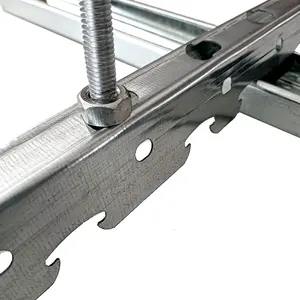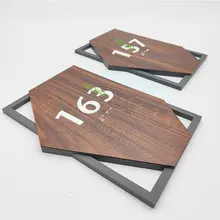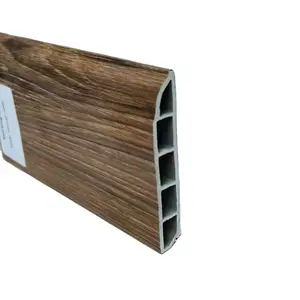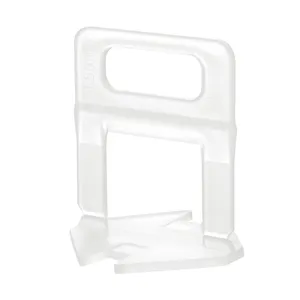What are Flooring Accessories
Flooring accessories are an integral part of the flooring industry, serving a vital role in both the installation process and the finishing touches of various flooring projects. They are designed to complement the main flooring material, providing functional and aesthetic benefits that enhance the overall appearance and performance of floors. This category is broad, covering everything from skirting boards to transition strips, underlayment materials, and leveling systems.
These accessories are primarily targeted at professionals in the construction and renovation industries, as well as at suppliers who cater to these markets. They are essential for contractors who install flooring in residential, commercial, or industrial settings. Flooring accessories help to achieve a seamless look, address practical considerations such as floor level differences between rooms, and ensure the longevity and durability of the flooring.
The principle behind how flooring accessories work is simple: they act as complementary components that support the main flooring material. For instance, underlayment provides a smooth surface for the main floor covering and can offer additional benefits such as sound insulation or moisture protection. Transition strips allow for a smooth shift between different types of flooring or flooring levels. Skirting boards and baseboards conceal the joint between the wall surface and the floor, providing a clean finish and protecting walls from scuffs.
Flooring accessories must be chosen carefully to match the type of primary flooring material being used and to meet the specific needs of the installation environment. For example, in areas with high moisture levels like bathrooms, waterproof accessories would be essential. In settings where acoustics are important, such as in an office or apartment building, sound-insulating underlayments might be selected.
Types of Flooring Accessories
Flooring accessories come in a variety of forms to suit different applications and aesthetic preferences:
Skirting Boards and Baseboards: These are used to cover the joint between the floor surface and the wall, enhancing the room's appearance while protecting the wall from damage.
Transition Strips and Profiles: These accessories allow for smooth transitions between different types of flooring or different levels, preventing tripping hazards and giving a professional finish.
Underlayment Materials: These are layers placed underneath the main flooring to provide cushioning, sound insulation, moisture resistance, and to ensure a level surface for installation.
Leveling Systems: These systems are critical during tile installations to ensure that each tile is laid flat and at an even height relative to surrounding tiles.
Floor Heating Systems: Designed to be installed underneath the floor surface, these systems provide warmth and are an increasingly popular accessory in colder climates or luxury projects.
Each type of accessory has common use cases; for instance, underlayment materials are often employed where soundproofing or thermal insulation is required, while leveling systems are indispensable in achieving flawlessly flat tile floors.
How to choose Flooring Accessories
Selecting suitable flooring accessories involves considering several factors aligned with project requirements. The type of primary flooring material is one key consideration; for example, heavier materials may require more robust underlayment options. The intended application area also influences choice—accessories that are selected for use in high-moisture environments such as bathrooms should be waterproof and resistant to mold growth.
Another important consideration is compatibility with existing design elements within a space. Skirting boards and transition strips come in various styles and finishes that should complement both the flooring and overall room aesthetics. In commercial settings such as offices or hotels, durability also becomes a priority due to higher traffic levels.
Finally, installation requirements can affect accessory choice. Products that facilitate easy installation may reduce labor costs and time on site. Businesses seeking cost-effective solutions will also weigh this against overall product quality to ensure long-term performance without frequent replacements or maintenance issues.
Best Flooring Accessories on Alibaba.com
For businesses looking for a comprehensive range of wholesale flooring accessories, Alibaba.com stands out as a global marketplace connecting buyers with suppliers from all over the world. The platform offers an extensive selection of products tailored to meet various project demands—whether it's for a luxury villa, an efficient office space, or a cozy home environment.
Alibaba.com streamlines the sourcing process with user-friendly search features that allow buyers to filter products based on specific needs such as material type, application area, design style, color, and more. This means businesses can find exactly what they need quickly without having to sift through irrelevant options.
Moreover, Alibaba.com's commitment to facilitating safe trade is evident through services like Trade Assurance which helps protect buyers' payments until their orders are fulfilled satisfactorily. This assurance coupled with a vast array of available products makes Alibaba.com an ideal platform for businesses looking to source high-quality flooring accessories efficiently and reliably from reputable suppliers worldwide.
Common FAQs for Flooring Accessories
What are the benefits of using skirting boards in a flooring installation?
Skirting boards provide a decorative finish to the room while also protecting the lower sections of the wall from scuffs and damage. They help to cover any expansion gaps or uneven edges between the flooring and the wall.
How do transition strips enhance a flooring project?
Transition strips are used to bridge the gap between different flooring materials or levels, which not only provides a smooth transition and adds to the aesthetic but also ensures safety by reducing tripping hazards.
Can underlayment materials affect the performance of my flooring?
Yes, underlayment materials can significantly impact the performance of your flooring by providing additional cushioning, improving sound insulation, offering moisture protection, and helping to create a level base for installation.
What factors should I consider when choosing underlayment for engineered flooring?
When selecting underlayment for engineered flooring, consider factors like acoustic properties, moisture resistance, compatibility with your flooring type, and the specific requirements of your installation environment.
Why is a leveling system important for tile flooring?
A leveling system is crucial for tile flooring as it helps prevent lippage where one edge of a tile is higher than an adjacent tile, ensuring a flat and even surface which is both aesthetically pleasing and safer for foot traffic.
What types of materials are commonly used for flooring accessories?
Common materials used for flooring accessories include WPC (wood plastic composite), aluminum alloy, SPC (stone plastic composite), stainless steel, PP (polypropylene), and various metals and woods.
How do I choose the right color for my flooring accessories?
Choose colors that complement or closely match your primary flooring material. Consider also the overall design style and color scheme of the space where the flooring will be installed.
Are there eco-friendly options available for flooring accessories?
Yes, many suppliers now offer eco-friendly options such as accessories made from recycled materials or sustainably sourced wood, which contribute to greener building practices.
What are some features I should look for in outdoor flooring accessories?
For outdoor applications, look for features like weather resistance, UV stability, anti-slip properties, and durability against wear and tear from foot traffic and environmental conditions.
How do design styles influence the choice of flooring accessories?
The design style of a space influences the choice of accessories as they should enhance or complement the overall aesthetic. For instance, modern design may call for sleek metal profiles, whereas a traditional space may benefit from classic wooden skirting boards.
Can floor heating systems be used with all types of primary flooring materials?
Floor heating systems are compatible with many types of primary flooring materials; however, it's important to check with both the heating system supplier and flooring manufacturer to ensure compatibility and optimal performance.
Are there specific thickness standards for underlayment materials?
Underlayment materials come in various thicknesses which are chosen based on the requirements of the primary flooring material as well as desired properties such as sound insulation or cushioning.
How do I determine if I need moisture-resistant flooring accessories?
Moisture-resistant accessories are recommended for areas prone to dampness or water exposure such as bathrooms, basements, kitchens, or outdoor settings. It's crucial to assess the environment where the flooring will be installed.
What after-sale services can I expect with flooring accessories?
After-sale services vary among suppliers but may include return and replacement policies, free spare parts, onsite installation support, training, and inspection services. Always confirm with your supplier what services are available.
What should I consider when choosing accessories for high-traffic areas like malls or schools?
For high-traffic areas, prioritize durability and ease of maintenance when choosing your accessories. Materials that can withstand heavy foot traffic and are easy to clean will be more suitable for these environments.












































 浙公网安备 33010002000092号
浙公网安备 33010002000092号 浙B2-20120091-4
浙B2-20120091-4